For better or worse, narrative is usually the name of the game for crypto markets in the short-term. Since the 2013 cycle, numerous narratives have risen such as “faster Bitcoin,” “ICOs,” “DeFi,” “GameFi,” and so on. Some narratives continued to break into their own separate growing niches within the wider industry while others faded into obscurity. One of the newer narratives that recently gained in prominence but hasn’t yet broken out into the mainstream is that of DePIN, which stands for decentralized physical infrastructure. It refers to the management of real-world facilities and resources by leveraging blockchain technology. These might include marketplaces for computational power or access to real-world data. DePIN seeks to improve upon the transparency and efficiency of traditional platforms that manage these critical resources. Because one of the criticisms of cryptocurrency as a whole is the lack of widespread application in the real world, DePIN should be examined in closer detail to see its potential impact on our daily lives from 2025 into the future.

Advantages and Disadvantages of DePIN
In the present day, physical infrastructure such as data networks, transportation systems, and electrical grids are typically owned and operated by centralized corporations or governments. DePIN transforms the status quo by establishing peer-to-peer (P2P) networks where individuals can contribute their own physical resources (like bandwidth, storage, or energy) and collectively share control over the network. Benefits of the vision presented by DePIN include:
-
Community Control - DePIN shifts the control from institutions to a collective of individuals. Participants contribute their own resources to build and maintain the network, and they share control much like how miners in Proof-of-Work (PoW) networks validate transactions. DePINs operate like industrial DAOs in which each participant’s influence is proportional to their contribution.
-
Aligned Incentives - Within a DePIN network resource providers have the opportunity to earn either passive or active income. This means participants can monetize underutilized resources and create new income streams for themselves, incentivizing honest participation as well as maximizing efficient resource usage.
-
Permissionless Access - Anyone can contribute resources to the network, and users can freely access the services provided. There is no need for price negotiation, user screening, or approval processes. As long as someone has the necessary infrastructure, they can create a provider account on a DePIN, similar to how anyone can deploy a liquidity pool on a DEX or take out a loan on a decentralized money market.

As the primary advantages lay out, DePIN essentially hands control back to the people. In the past, centralization was necessary to improve efficiency but now blockchain can enable anybody with the internet to contribute and earn without bias. With that being said, the sector is not without its challenges especially on the adoption side. Anyone with knowledge of network effects would know that a network can experience exponential growth as more people participate, but it’s the early adopters who are hardest to gather initially. Currently DePIN mainly exists as a narrative amongst blockchain enthusiasts, so existing platforms are small in scale and do not benefit much from network effects or economies of scale. Even if the logic and incentives are sound, if no significant increases are made in the number of resource providers and network participants, then a network is bound to fail.
Top DePIN Projects heading into 2025
The Graph: The Graph is a decentralized indexing protocol that organizes blockchain data into structured formats, making it easy for users and decentralized applications (DApps) to retrieve that data quickly. Indexing is crucial for the modern web, enabling the fast data retrieval that powers today's internet experience.
In the traditional Web2 space, companies like Amazon Web Services (AWS) provide indexing, cloud storage, and other essential services to millions of users worldwide. Many decentralized applications (DApps) still depend on centralized providers like AWS for web hosting, storage, and data indexing, creating a reliance on centralized infrastructure. The Graph Protocol seeks to decentralize this process by creating an open market for blockchain data indexing. It allows participants to curate, index, and trade blockchain data via subgraphs — specialized data sets that can be used by DApps or users. This data marketplace operates using GRT (Graph Token), the ecosystem’s native utility token.

Akash Network: Akash Network is Web3’s answer to cloud providers like Microsoft Azure and Google Cloud. Traditional cloud services manage a network of global servers to provide computational resources for running websites, applications, analytics, and networking tools. Akash aims to do the same but by following a decentralized model. Instead of relying on centralized servers, it creates an on-chain marketplace where users with personal servers, data centers, or unused computational resources can participate as resource providers. These providers list their services on-chain and submit bids to compete for contracts. Tenants who are users of those computational resources can then review these bids and select the best option.
Render Network: The Render Network is a decentralized compute protocol that utilizes the idle GPU power of network participants for 3D rendering and AI computation tasks. It sets up a marketplace for GPU power, where providers have surplus GPU and rent it out in exchange for the network’s native currency RENDER.
Initially built on the Polygon network, the Render Network migrated to the Solana blockchain in November 2023. This move was driven by Solana's low gas fees and high throughput capabilities, allowing for faster, more cost-efficient transactions and rendering processes. The decision seemed to work out as Render Network has seen a nearly 80% gain in its token value over the past year and now sits at around $4 billion in market capitalization.
Read More
- Top Crypto Trends Heading into 2025
- What are AI Agents? The Potential Next Big Thing in Crypto
- What is DePIN? Analysis of Decentralized Physical Infrastructure Networks
- What is DePIN & How does it Work?
- Top Crypto Trends Heading into 2025
- Resurgence of DeFi: LINK, AAVE, and New Developments like HYPE
- https://phemex.com/academy/defi
- Decentralized Science (DeSci) - The Next Big Blockchain Development?
- Top Crypto Use Cases for 2025
- What are AI Agents? The Potential Next Big Thing in Crypto








